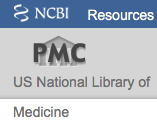The Chemical and Biological Properties of Propolis
Guest Editor (s): José M Alvarez-Suarez, Weam Siheri, Sameah Alenezi, Jonans Tusiimire, and David G. Watson
Abstract
The term propolis comes from two Greek words, pro (which means for or in defence of) and polis (which means the city); thus, propolis means in defence of the city or beehive. Propolis is a sticky resinous substance, which is gathered from buds and the bark of trees. It is also known as “bee glue” as bees use it to cover surfaces, seal holes and close gaps in their hives, thus providing a sterile environment that protects them from microbes and spore-producing organisms, including fungi and molds. It can be considered to be a potent chemical weapon against bacteria, viruses, and other pathogenic microorganisms that may invade the bee colony. Also, bees use propolis as an embalming substance, to mummify invaders such as other insects, that have been killed and are too heavy to remove from the colony. Thus, propolis is important for bee health but it also has activity against many human diseases. It is a powerful anti-oxidant and can modulate the activity of reactive oxygen species within the human body. The most studied aspect of propolis is its anti-bacterial activity, which is almost always present at a moderate to high level depending on the exact type of propolis. It is in general more active against Gram positive than Gram negative bacteria, but activity against Gram negative bacteria has been observed. Propolis has been found to be active against a range of viruses and also is almost always active against protozoa such as Tryanosoma brucei and Leishmania donovani. Propolis also shows activity against cardiovascular diseases and diabetes and has immunomodulatory effects. Anti-cancer activity has also been observed. In summary, propolis is remarkable for its range of biological activities and for the variety of its chemical composition. It may be of great importance both to bees and humans.
* THESE STATEMENTS HAVE NOT BEEN EVALUATED BY THE FOOD AND DRUG ADMINISTRATION. THIS IS NOT INTENDED TO DIAGNOSE, TREAT CURE OR PREVENT ANY DISEASE.
